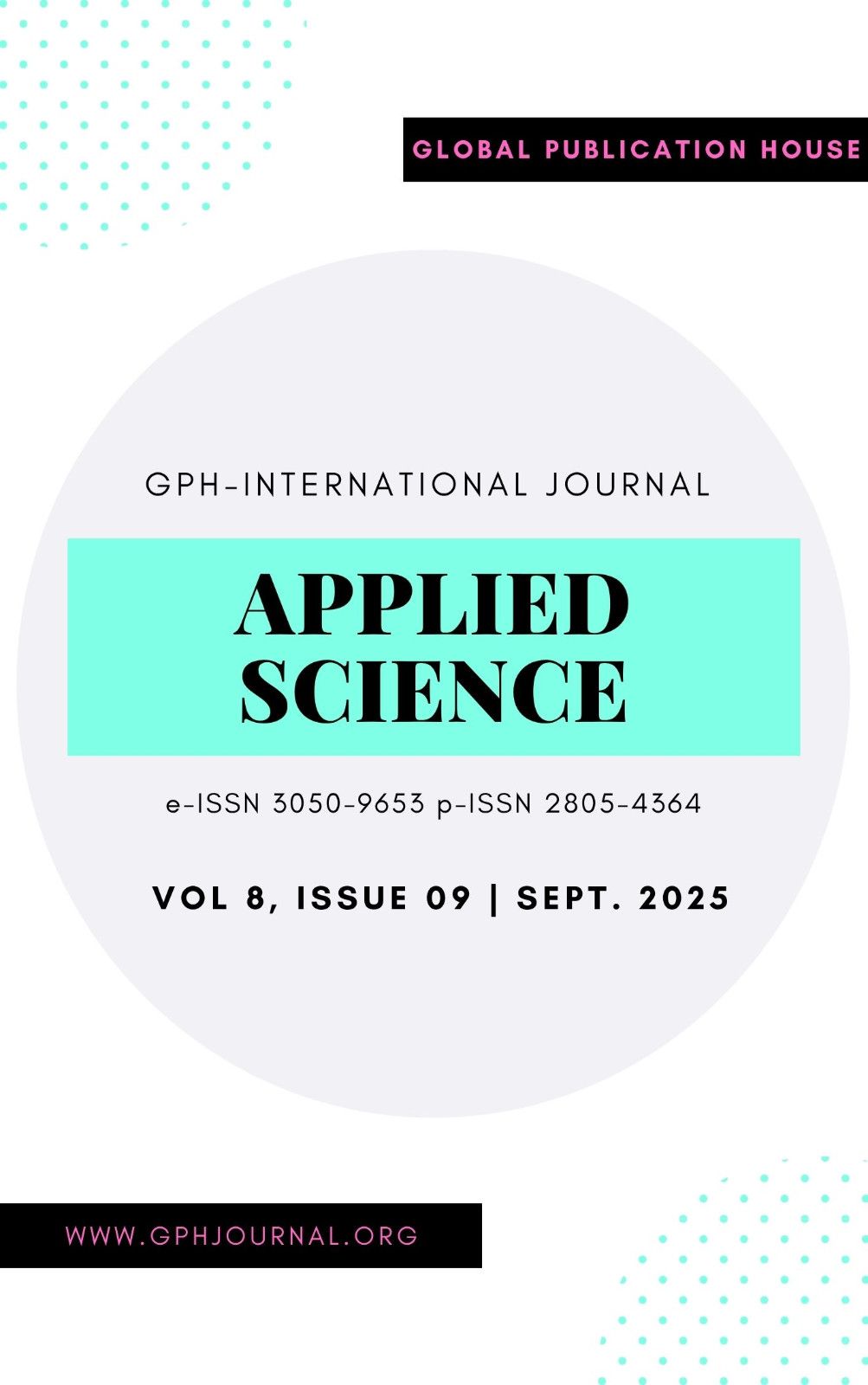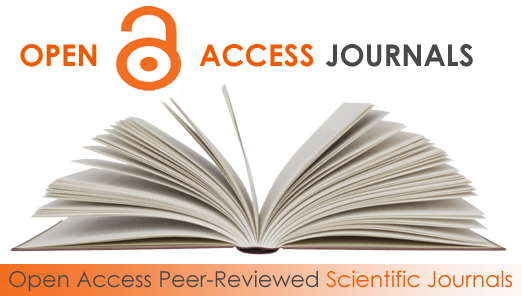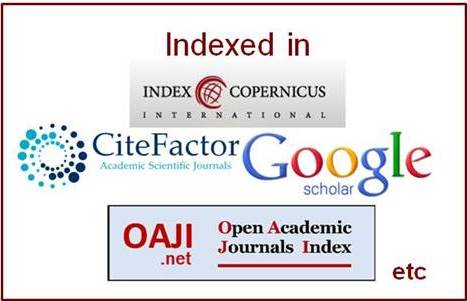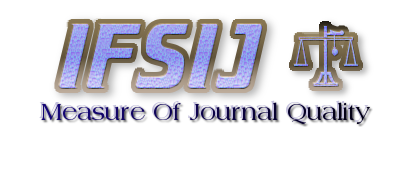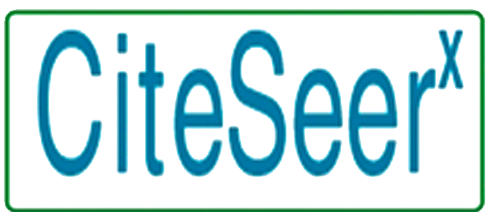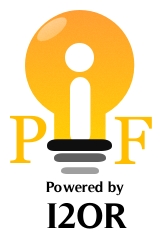Glycemic and Biochemical Effects of Phytosterol in Female Wistar Rats
Abstract
Phytosterols are like cholesterol and maintain structural components of plant cell membrane. The present study aims to investigate the glycemic and biochemical effects of phytosterol using Wistar rats as experimental models. Fifteen (15) female Wistar rats were divided randomly into three (3) groups, each consisting of five (5) rats. Group I served as control and rats in this group were administered distilled water. Groups II and III served as the treatment groups and received 1000 and 2000mg/kg body weight of phytosterol respectively. Phytosterol was orally administered daily for twenty-eight (28) days in the morning hours (8-9am daily). During the study, serum blood glucose level was determined twice via tail vein puncture technique: firstly, before the administration of phytosterol (pre-treatment blood glucose: Day 0); secondly, at the end of the study (post-treatment blood glucose: Day 29). At the end of treatment, (Day 29), blood samples were collected via direct cardiac puncture and stored in lithium heparin tubes for analysis of biochemical indices. Findings from this study indicate that phytosterol treatment resulted in a significant and dose dependent decrease in blood glucose, total cholesterol, triglyceride, low-density lipoprotein, and malondialdehyde levels in the experimental groups relative to control (p < 0.05). Conversely, a significant and dose dependent increase was observed in the mean animal weight, high-density lipoprotein, glutathione, superoxide dismutase and catalase concentrations among the experimental rats compared to control (p<0.05). Evidence from this study suggests that phytosterol treatment lowers blood glucose level, decrease lipid profile and basal oxidative stress markers by decreasing glycemic indices, cardiovascular risks and oxidative disruptions. This effect is probably achieved via beta cell stimulation and decreased reactive oxygen species radicals.
Downloads
References
(EFSA) European Food Safety Authority (2008). Plant Sterols and Blood Cholesterol - Scientific substantiation of a health claim related to plant sterols and lower/reduced blood cholesterol and reduced risk of (coronary) heart disease pursuant to Article 14 of Regulation (EC) No 1924/2006[1]
Akhisa T, Kokke W (1991). Naturally occurring sterols and related compounds from plants. In Patterson, G. W.; Nes, W. D. (eds.). Physiology and Biochemistry of Sterols. Champaign, IL: American Oil Chemists' Society. pp. 172– 228. https://doi.org/10.1201/9781439821831.ch7
Awad AB, Barta SL, Fink CS, and Bradford PG (2008). β-sitosterol enhances tamoxifen effectiveness on breast cancer cells by affecting ceramide metabolism. Molecular Nutrition & Food Research. 52:419–426. 2008/4. https://doi.org/10.1002/mnfr.200700222.
Bouic PJ (2001). The role of phytosterols and phytosterolins in immune modulation: a review of the past 10 years. Current Opinion in Clinical Nutrition and Metabolic Care. 4:471–475. https://doi.org/10.1097/00075197-200111000-00001.
Cabral CEK, Ma’rcia regina STK (2017). Phytosterols in the Treatment of Hypercholesterolemia and Prevention of Cardiovascular Diseases. Arquivos Brasileiros de Cardiologia. 109:475–482. 2017/11. https://doi.org/10.5935/abc.20170158
Carlos EC, and Ma’rcia regina STK (2017). Phytosterols in the treatment of hypercholesterolemia and prevention of cardiovascular diseases. Arquivos Brasileiros de Cardiologia. 109(5):475-482. https://doi.org/10.5935/abc.20170158.
Castelli WP, Garrison RJ, Wilson PWF, Abbott RD, Kalousdian S, Kannel WB (1986). Incidence of coronary heart disease and lipoprotein cholesterol levels: The Framingham Study. JAMA, 256, 2835-2838.
Chinko BC, Umeh OU (2023). Alterations in Lipid profile and oxidative stress markers following heat stress on Wistar rats: Ameliorating role of vitamin C. Biomedical Sciences 9(1):12- 17. https://doi.org/10.11648/j.bs.20230901.13.
Gbaranor KB, Maakai B, Olatunbosun TH, Ben EE, Otobo BM, Enebeli KS, Saronee F, Etim DN, Ovili-Odili BZ, Daka IR (2024). Effects of Smoothies on Oxidative Stress Markers Following Administration of Monosodium Glutamate in Male Wistar Rats. Scholar International Journal of Anatomy and Physiology. 7(8): 129-134. https://doi.org/10.36348/sijap.2024.v07i08.001.
Genser B, Silbernagel G, De Backer G, Bruckert E, Carmena R, Chapman MJ, Deanfield J, Descamps OS, Rietzschel ER, Dias KC, März W (2012). Plant sterols and cardiovascular disease: A systematic review and meta-analysis. European Heart Journal. 33 (4): 444–451. https://doi.org/10.1093/eurheartj/ehr441.
Ijaola TO, Osunkiyesi AA, Taiwo AA, Oseni OA, LanreIyanda YA, Ajayi JO, and Oyede RT (2014). Antidiabetic effect of Ipomoea batatas in normal and alloxan induced diabetic rats. IOSR Journal of Applied Chemistry. 7: 16-25. https://doi.org/10.9790/5736-07521625
Ijeoma E, Chibuike O, Friday S, & Adesua CO (2020). Effects of Leaf Extract of Cnidoscolus aconitifolius on Serum Lipids and Oxidative Stress Markers of Male Wistar Rats. Asian Journal of Biochemistry, Genetics and Molecular Biology, 5(1), 47-52. https://doi.org/10.9734/AJBGMB/2020/v5i130120.
Lesma G, Luraghi A, Bavaro T, Bortolozzi R, Rainoldi G, Roda G, Viola G, Ubiali DS (2018). Phytosterol and γ-Oryzanol Conjugates: Synthesis and Evaluation of their Antioxidant, Antiproliferative, and Anticholesterol Activities. Journal of Natural Products. 8(1):2212– 2221. https://doi.org/10.1021/acs.jnatprod.8b00465.
Lorke D (1983). A new approach to practical acute toxicity testing. Archives of Toxicology 54(4):275-287. https://doi.org/10.1007/BF01234480
Moreau RA, Hicks KB (2004). The in vitro hydrolysis of phytosterol conjugates in food matrices by mammalian digestive enzymes. Lipids. 39 (8): 769– 76. https://dx.doi.org/10.1007/s11745-004-1294-3.
Moreau RA, Nyström L, Whitaker BD, Winkler-Moser JK, Baer DJ, Gebauer SK, Hicks KB (2018). Phytosterols and their derivatives: Structural diversity, distribution, metabolism, analysis, and health-promoting uses. Progress in Lipid Research. 70: 35– 61. https://doi.org/10.1016/j.plipres.2018.04.001.
National Research Council of the National Academies (2011). Guide for the Care and Use of Laboratory Animals (8th Edition). National Academic Press, Wahington D.C.
Niwa AT, Tajiri H, Higashino H (2011). Ipomoea batatas and Agarics blazei ameliorate diabetic disorders with therapeutic antioxidant potential in streptozotocin-induced diabetic rats. Journal of Clinical Biochemistry and Nutrition. 48: 194-202. https://doi.org/10.3164/jcbn.10-78
Obiandu1 C, Saronee F, Okari K, and Obiandu AC (2019). Effects of Hydromethanol Extracts of Garcinia Kola on Some Biochemical Parameters of Male Wistar Rats. International Journal of Research and Scientific Innovation. 6(11); 123 – 128.
Patterson CA (2006). Phytosterols and stanols: Topic 10075E (PDF). Agriculture and Agri-Food Canada, Government of Canada. Retrieved 7 November 2017.
Salehi-Sahlabadi A, Varkaneh HK, Shahdadian F, Ghaedi E, Nouri M, Singh A, Farhadnejad H, Găman MA, Hekmatdoost A, Mirmiran P (2020). Effects of Phytosterols supplementation on blood glucose, glycosylated hemoglobin (HbA1c) and insulin levels in humans: a systematic review and meta-analysis of randomized controlled trials. Journal of Diabetes and Metabolism Disorder. 19 (1): 625–632. https://doi.org/10.1007/s40200-020-00526-z.
Saronee F, Amah-Tariah FS, Chinko BC, and Dapper DV (2023). GC-MS and Proximate Analysis of the Hydromethanol Extract of Craterispermum schweinfurthi Leaves. South Asian Research Journal of Natural Products. 6(2): 101 – 109. Saronee622023SARJNP99246
_2.pdf.
Saronee F, Bekinbo MT, Ojeka SO, & Dapper, DV (2019). Comparative assessment of methanolic extracts of hog plum (Spondias mombin Linn.) leaves and turmeric (Curcuma longa L.) rhizomes on blood glucose and glycosylated hemoglobin in male Wistar rats. Journal of Applied Sciences and Environmental Management, 23(9), 1631-1636. https://dx.doi.org/10.4314/jasem.v23i9.4.
Saronee F, Bekinbo MT, Ojeka SO, Dapper DV (2019). Comparative Assessment of Methanolic Extracts of Hog Plum (Spondias mombin linn.) Leaves and Turmeric (Curcuma longa L.) Rhizomes on Blood Glucose and Glycosylated Haemoglobin in Male Wistar Rats. Journal of Applied Sciences and Environmental Management. 23(9); 1631-1636. https://dx.doi.org/10.4314/jasem.v23i9.4
Saronee F, Dan-Jumbo D, Perowei A, and Amadi JE (2024). Modulatory Functions of Craterispermum schweinfurthi on the Hypothalamic Pituitary-Gonadal Axis of Male Wistar Rats in Phenyl Hydrazine Induced Testicular Toxicity. Journal of Complementary and Alternative Medical Research. 25(4): 31-39. https://dx.doi.org/10.9734/JOCAMR/2024/v25i4530.
Saronee F, Kolawole TA, Amieye BD, Amadi NG, Amadi JE, Buduburisi RB, Dapper DV (2024). Antioxidant and anti-inflammatory functions of turmeric and cucumber juice following lead-induced toxicity in male Wistar rats. GPH-International Journal of Biological & Medicine Science, 7(10), 21-31. https://doi.org/10.5281/zenodo.14192234.
Saronee F, Sunday OO, Okekem A, Ogadinma N I, & Datonye VD (2020). Comparative Study of the Effects of Methanolic Extracts of Spondias mombin Leaves and Curcuma longa Rhizomes on Serum Lipid Profile and Electrolytes in Alloxan Induced Diabetes in Male Wistar Rats. Asian Journal of Advanced Research and Reports, 8(3), 1-9. https://doi.org/10.9734/AJARR/2020/v8i330198.
Saronee F, William AG, Offong EJ, Amadi JE, Azosibe P (2024). Hypolipidemic And Testicular Cytoarchitecture Protective Effects of the Hydromethanol Leaf Extract of Craterispermum schweinfurthi in Male Wistar Rats. EAS Journal of Pharmacy and Pharmacology. 6(4);157 – 162. https://doi.org/10.36349/easjpp.2024.v06i04.002
Valsta LM, Lemström A, Ovaskainen ML, Lampi AM, Toivo J, Korhonen T, Piironen V (2007). Estimation of plant sterol and cholesterol intake in Finland: Quality of new values and their effect on intake. British Journal of Nutrition. 92 (4): 671– 8. https://dx.doi.org/10.1079/BJN20041234.
Yusuf S, Hawken S, Öunpuu S (2004). Effect of potentially modifiable risk factors associated with myocardial infarction in 52 countries (the INTERHEART study): case-control study. Lancet. 364:937–952. https://doi.org/10.1016/S0140-6736(04)17018-9.
Zhang B, Zhang H, He J, Zhou S, Dong H, Rinklebe Jr, Ok YS (2023). Vanadium in the environment: Biogeochemistry and bioremediation. Environmental Science & Technology 57(39):14770-14786. https://doi.org/10.1021/acs.est.3c04508
Zhang T, Liu R, Chang M, Jin Q, Zhang H, Wang X (2020). Health benefits of 4,4-dimethyl phytosterols: an exploration beyond 4-desmethyl phytosterols. Food & Function. 11 (1): 93–110. https://dx.doi.org/10.1039/C9FO01205B.
Author(s) and co-author(s) jointly and severally represent and warrant that the Article is original with the author(s) and does not infringe any copyright or violate any other right of any third parties, and that the Article has not been published elsewhere. Author(s) agree to the terms that the GPH Journal will have the full right to remove the published article on any misconduct found in the published article.
